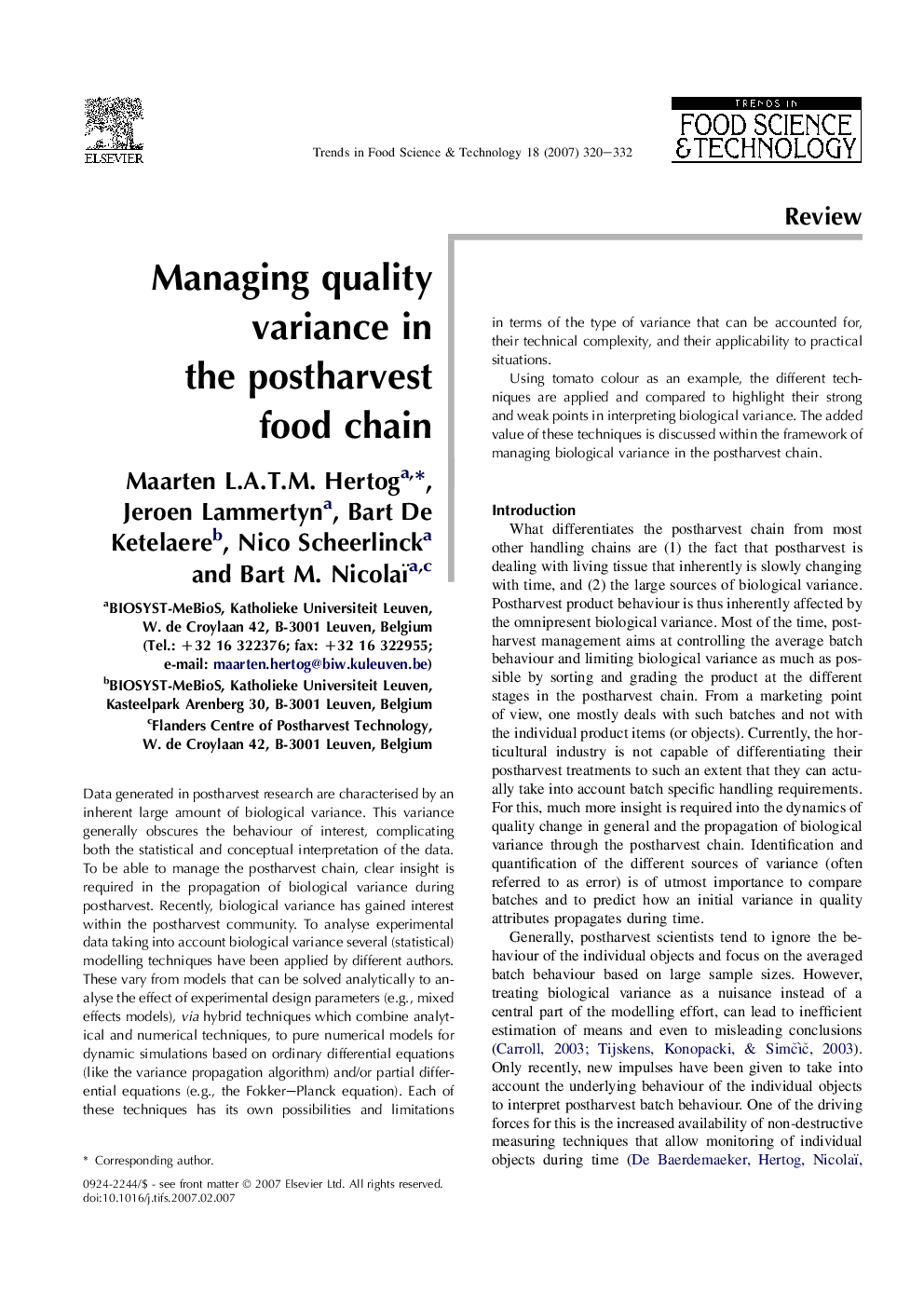| کد مقاله | کد نشریه | سال انتشار | مقاله انگلیسی | نسخه تمام متن |
|---|---|---|---|---|
| 2099374 | 1082689 | 2007 | 13 صفحه PDF | دانلود رایگان |

Data generated in postharvest research are characterised by an inherent large amount of biological variance. This variance generally obscures the behaviour of interest, complicating both the statistical and conceptual interpretation of the data. To be able to manage the postharvest chain, clear insight is required in the propagation of biological variance during postharvest. Recently, biological variance has gained interest within the postharvest community. To analyse experimental data taking into account biological variance several (statistical) modelling techniques have been applied by different authors. These vary from models that can be solved analytically to analyse the effect of experimental design parameters (e.g., mixed effects models), via hybrid techniques which combine analytical and numerical techniques, to pure numerical models for dynamic simulations based on ordinary differential equations (like the variance propagation algorithm) and/or partial differential equations (e.g., the Fokker–Planck equation). Each of these techniques has its own possibilities and limitations in terms of the type of variance that can be accounted for, their technical complexity, and their applicability to practical situations.Using tomato colour as an example, the different techniques are applied and compared to highlight their strong and weak points in interpreting biological variance. The added value of these techniques is discussed within the framework of managing biological variance in the postharvest chain.
Journal: Trends in Food Science & Technology - Volume 18, Issue 6, June 2007, Pages 320–332